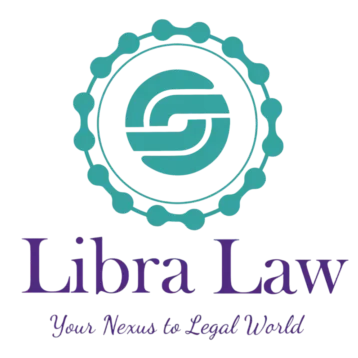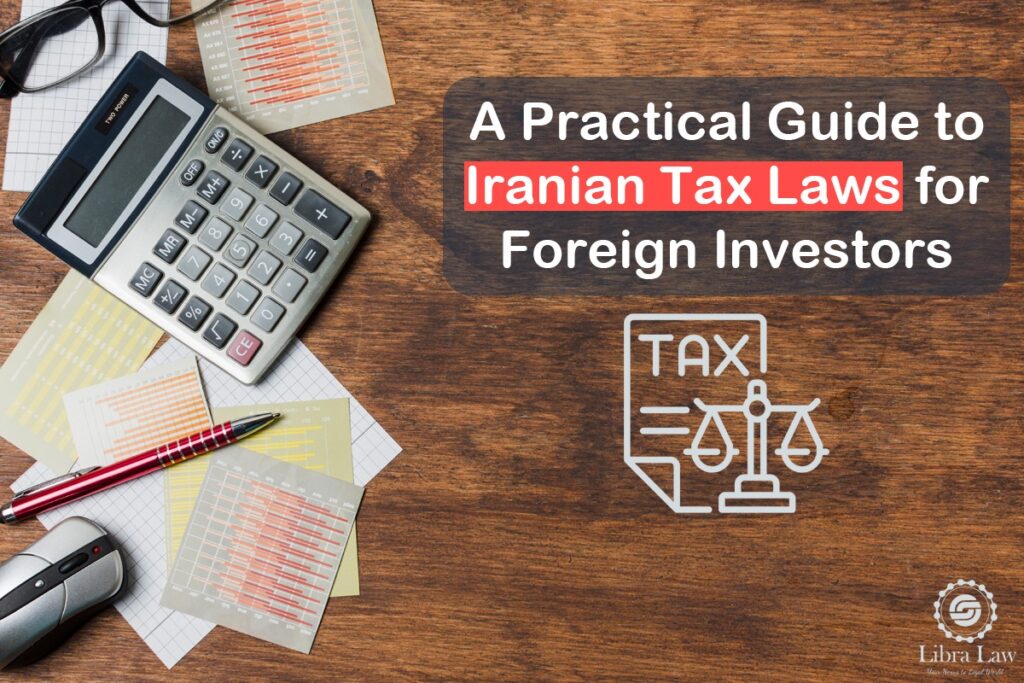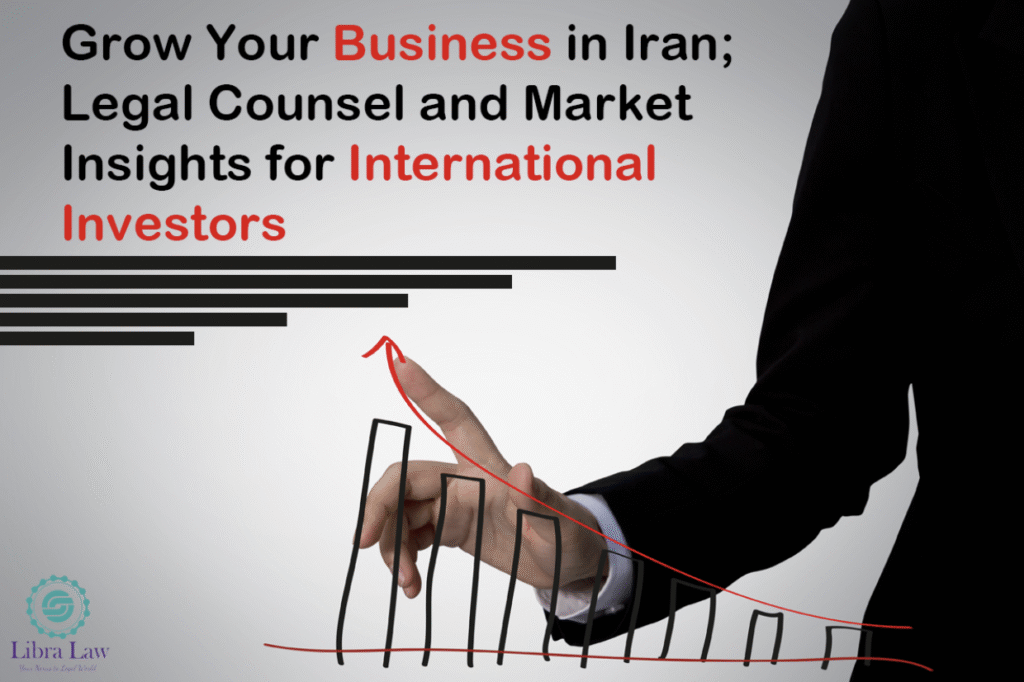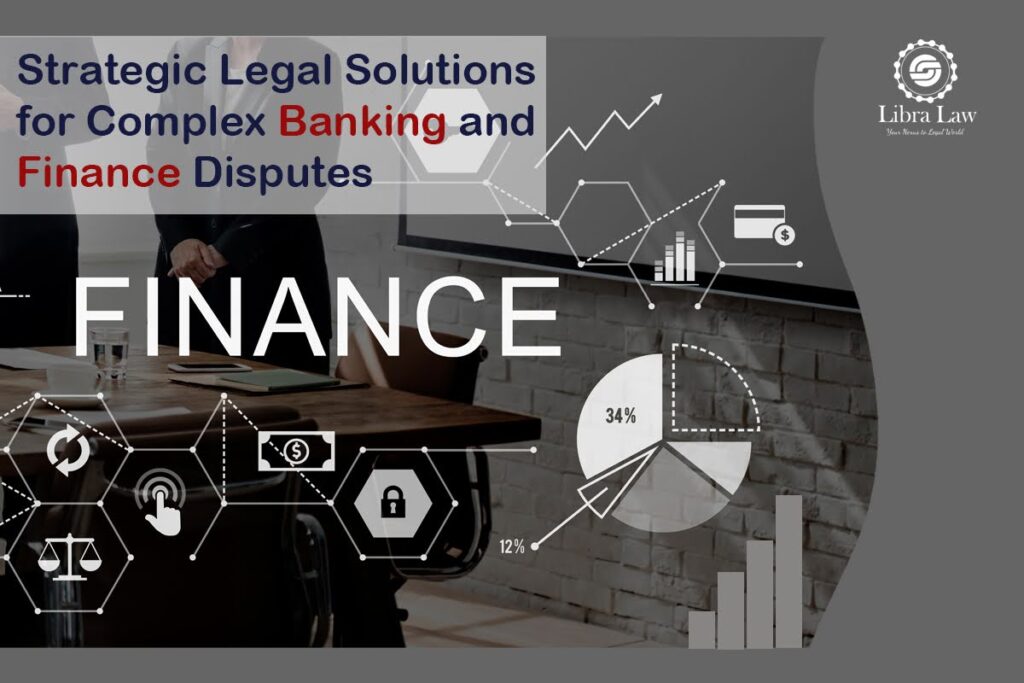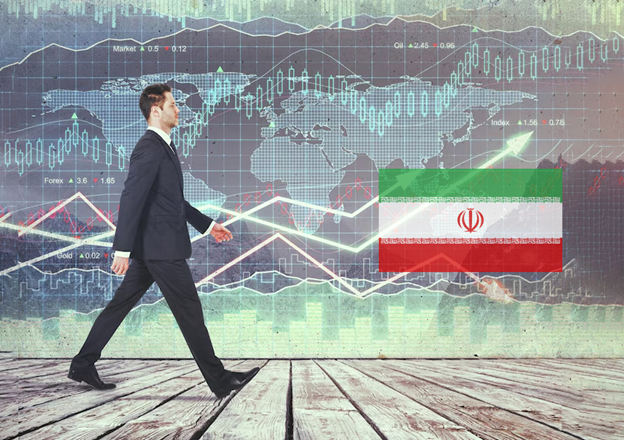Corporate Governance in the Middle East and North Africa: A Path to Sustainable Growth and Investor Confidence is a subject no responsible business owner can afford to overlook. In today’s competitive and complex marketplace, understanding the principles and challenges of corporate governance across the Middle East and North Africa is essential for driving stability, transparency and long-term growth; This is particularly true for companies operating in emerging markets like Iran, where institutional frameworks are still evolving. More than a legal requirement, corporate governance has become a strategic imperative — one that can boost investor confidence, secure international partnerships and elevate your business above the competition.
The legal experts at LibraLaw Firm are here to offer insights into the evolving corporate governance landscape across the MENA region. In this discussion, we will delve into the specific challenges and opportunities for businesses navigating governance issues, focusing on both the legal frameworks and practical considerations. Whether you are a domestic company or looking to expand internationally, our team aims to shed light on how proper governance can protect your interests and improve your business’s performance in a complex regulatory environment. Stay with us as we explore why understanding corporate governance matters for companies and how you can leverage it for success in the MENA region.
Corporate Governance in the MENA region is a subject no responsible business owner can afford to overlook. Understanding the principles and challenges of corporate governance across the Middle East and North Africa is essential for driving stability, transparency and long-term growth; This is particularly true for companies operating in emerging markets like Iran, where institutional frameworks are still evolving. For deeper insights into the underlying legal frameworks that shape corporate governance, refer to our article «Business Contracts in Iran; Strategies to Protect Your Interests».
Why Is Corporate Governance in MENA Region Still a Pressing Issue?

Corporate governance is not a new phenomenon for the transition economies of the Middle East. However, it remains a critical area of focus given the unique structural and institutional limitations of these economies. Unlike developed markets with long-established financial systems, most MENA countries lacked the necessary institutional frameworks to regulate corporate behavior effectively and transparently; This deficiency became particularly evident following the series of emerging market crises in 1997, which acted as a wake-up call for governments and private sector actors alike (Sourial, 2004).
Since then, the landscape has evolved considerably. Corporate governance codes have been developed and adopted in many MENA countries to address governance issues tailored to each national context. For instance, Egypt introduced its first corporate governance code in 2005, focusing initially on listed companies, while Jordan followed suit by integrating corporate governance into its capital market reform strategies; These codes were not only shaped by internal needs but also influenced by international best practices promoted by the Organisation for Economic Co-operation and Development (OECD) and the World Bank.
Within the framework of various public-private initiatives, stakeholders, such as regulators, investors and business associations, have engaged in shaping these codes; This participatory process has led to improvements in both legally binding regulations (hard law) — such as amendments to company and securities laws — and voluntary measures (soft law), like governance guidelines and scorecards. As a result, corporate governance reform in the MENA region has taken root not only in formal compliance, but also in a broader understanding of accountability, transparency and stakeholder engagement.
What Sparked Global Momentum for Stronger Governance?

the financial scandals at the beginning of the 21st century — such as the collapses of Enron (2001) and WorldCom (2002) — led to a surge in the development and adoption of corporate governance codes across the world; These high-profile failures exposed deep flaws in oversight mechanisms and internal controls, prompting both developed and developing economies to reevaluate and strengthen the fundamentals of corporate accountability. Consequently, there was a global push for setting universal benchmarks for sound corporate behavior.
Despite variations in legal systems and market structures across jurisdictions, these governance codes share a set of common principles aimed at establishing comprehensive standards of good governance. At the heart of these principles is the prevention of conflicts of interest — particularly between management and shareholders — and the promotion of full disclosure and transparency in both financial reporting and strategic decision-making; For example, the Sarbanes-Oxley Act (2002) in the U.S. mandated stricter disclosure rules and CEO accountability, while countries like the UK revised their Combined Code to strengthen board independence.
Another key pillar is the proper composition of boards of directors, emphasizing the inclusion of independent, non-executive directors to provide unbiased oversight. Many codes also address executive compensation, aimed at aligning managerial incentives with long-term corporate performance and discourage short-termism. In addition, the protection and empowerment of shareholders — particularly minority investors — has gained significant attention, reflected in mechanisms for proxy voting, access to information and the ability to challenge decisions at shareholder meetings.
These shared elements illustrate a growing international consensus: corporate governance is no longer regarded as a purely internal administrative concern; but rather as a strategic imperative essential to market stability and investor confidence.

How Has Corporate Governance Evolved in Iran?
The concept and importance of corporate governance is a relatively new subject in Iran, first gaining public attention when the Tehran Stock Exchange attempted to develop a draft Code of Corporate Governance in 2004; This initiative, inspired by OECD guidelines, drew heavily from Malaysia’s Corporate Governance Code, a fellow emerging market that had undergone significant reforms following the Asian financial crisis. The draft focused on aligning domestic governance structures with international standards, such as enhancing board independence and increasing disclosure requirements.
By 2010, the Securities and Exchange Organization (SEO) finalized and officially adopted Iran’s Code of Corporate Governance. However, a major limitation remains: implementation is not mandatory for listed companies. As a result, many firms continue to operate with minimal changes to their governance frameworks. Nevertheless, recent years have witnessed growing momentum. Several conferences and academic seminars — particularly those held in collaboration with business schools and financial research institutions — have contributed to raising awareness of governance practices among regulators, scholars and market participants.
In parallel, the Securities and Exchange Organization (SEO) has aimed to promote improved corporate conduct through targeted bylaws rather than through comprehensive enforcement mechanisms; For instance, the Disclosure and Transparency bylaw has been one of the most notable efforts aimed at improving investor access to timely and accurate information. Similarly, initiatives related to internal controls and the functioning of audit committees are gradually entering broader regulatory discourse. For a deeper dive into the legal mechanisms driving investor protection and transparency, refer to our article «The Complete Legal Guide for Foreign Investors in Iran».
The translation of the OECD Principles of Corporate Governance into Farsi in 2008 represented a symbolic move toward the localization of international standards. However, practical engagement with these principles is still largely limited to academic circles and select policy-making bodies. Encouragingly, there is growing interest among institutional investors, audit firms and a number of forward-thinking companies — particularly those seeking foreign partnerships or listing on international exchanges — who have started to view corporate governance not merely as a compliance obligation but as a strategic advantage.

What Are the Main Structural Weaknesses in Iranian Companies?
Iranian companies follow a one-tier board structure, where the Board of Directors assumes both supervisory and executive responsibilities. However, in the case of some semi-governmental or state-affiliated enterprises, a two-tier board model has been adopted in name, consisting of a Trustee Board (similar to a supervisory board) and a Management Board. While this structure is intended to separate strategic oversight from daily operations, its implementation remains inconsistent and largely symbolic, without the legal foundation or procedural rigor found in established two-tier systems such as those in Germany or the Netherlands.
A critical limitation of the Iranian board system is the lack of truly independent directors. This structural gap weakens internal checks and balances, as board appointments are often based less on merit, expertise or experience in corporate strategy and governance than on political affiliations, informal networks or influence within semi-public institutions; This problem is exacerbated in state-controlled firms, where appointments are closely tied to political cycles and shifts in government policy, resulting in low board continuity and weak oversight.
Another key factor shaping board dynamics is the ownership structure, which in Iran — similar to many MENA countries — is dominated by closely held, family-owned small and medium-sized enterprises (SMEs). In such settings, boundaries between family members, shareholders, board members and senior executives are often indistinct. It is not uncommon for the same individuals to simultaneously hold ownership stakes, serve on the board and manage the company; This overlap reduces transparency and often results in decisions that serve familial interests at the expense of minority shareholders or long-term corporate sustainability.
In practical terms, these governance characteristics pose significant barriers to the adoption of international best practices and deter foreign investment — particularly in sectors where managerial independence and accountability are critical. Without structural reforms that promote independent oversight, transparent board appointment processes and clearly defined roles for governance actors, the development of effective corporate governance in Iran remains constrained.
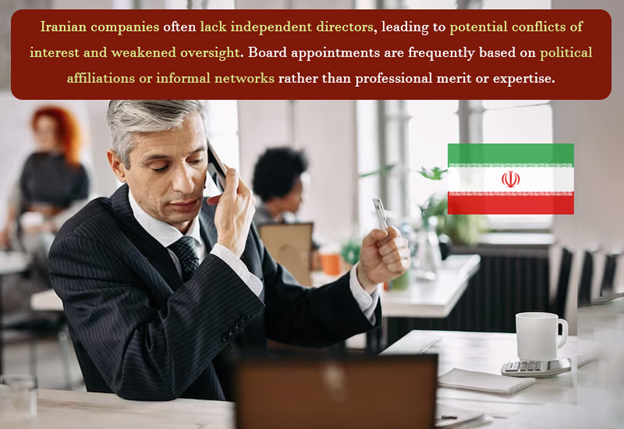
What Institutional Reforms Are Necessary to Strengthen Governance?
To improve corporate governance and strengthen investor confidence in Iran, a series of institutional reforms are necessary. The following key areas require focused attention:
- Enhancing Minority Investor Protection
Iran has consistently ranked low in terms of protecting minority investors. Weak protections often mean that shareholders with smaller stakes have limited rights, little access to company information, and minimal influence on major decisions. Strengthening disclosure requirements, increasing board accountability and ensuring shareholder voting rights can greatly improve trust in corporate governance — a critical factor for both local and foreign investors.
- Improving Judicial Efficiency
The current legal system faces delays and procedural inefficiencies that make contract enforcement and dispute resolution time-consuming and uncertain. Enhancing the capacity and speed of the judiciary, especially in commercial cases, would improve the business environment by making legal outcomes more predictable and fair.
- Ensuring Regulatory Clarity and Stability
Frequent changes in regulations, unclear laws, and inconsistent enforcement create confusion for businesses. Companies — especially those without political connections — face difficulties in navigating the regulatory landscape. Clear, stable and transparently enforced regulations would allow firms to make long-term plans with greater confidence.
- Creating Transparent Dispute Resolution Mechanisms
Currently, the lack of independent and efficient mechanisms for resolving business disputes discourages many investors. Establishing specialized commercial courts or arbitration bodies, with transparent and standardized procedures, would provide businesses with reliable tools to resolve conflicts outside of politically influenced institutions.
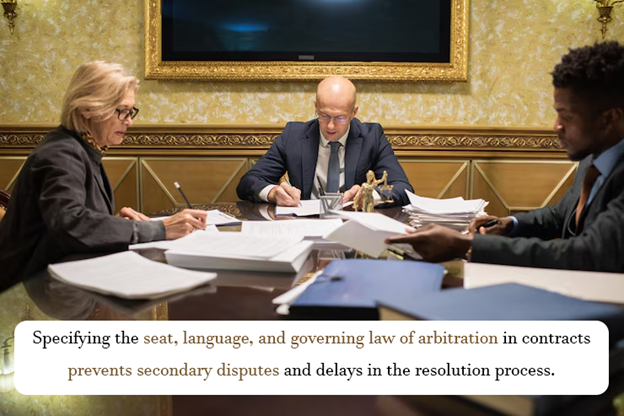
- Simplifying Bureaucratic Procedures
While some progress has been made in reducing the number of procedures to start a business, bureaucracy remains a major barrier. Further simplification and digitalization of processes such as company registration, property transfer, and licensing would reduce corruption opportunities and improve overall business efficiency.
- Strengthening the Rule of Law and Anti-Corruption Measures
Weak rule of law and widespread corruption undermine fair competition and discourage compliance with legal standards. Institutional reforms that promote transparency, hold public officials accountable,and protect whistleblowers can significantly boost investor confidence and improve governance outcomes.
- Balancing State Influence in the Economy
State-owned enterprises and politically connected firms often dominate key sectors, creating an uneven playing field. Reforms that ensure fair competition and limit undue influence from state-affiliated actors are essential to promoting private sector growth and good governance.
Strengthening corporate governance in Iran requires more than just internal company reforms; it demands broad-based institutional changes that enhance transparency, accountability and the rule of law. By focusing on minority investor protection, judicial efficiency, regulatory clarity, and fair competition, Iran can build a more predictable and attractive business environment; These reforms are not only vital for boosting investor confidence, but are also essential for promoting long-term economic stability and sustainable private sector growth. Without such structural changes, efforts to improve governance at the company level will remain constrained by systemic weaknesses.

What’s the Current Business Environment Like in Iran?
As highlighted in the article «A Simple Guide to Entering the Iranian Market; Choosing the Right Legal Structure for Foreign Investment», understanding the legal vehicles available is essential for navigating Iran’s complex business environment. Iran’s business environment remains fundamentally challenging, with only marginal progress over the past decade. In the World Bank’s Doing Business 2020 report, Iran ranked 127th out of 190 economies — barely an improvement from its 2011 position of 129; This stagnation reflects persistent structural and regulatory barriers that limit both domestic entrepreneurship and foreign direct investment. Bureaucratic red tape, overlapping legal frameworks and inconsistent enforcement of regulations continue to discourage private sector development and erode investor confidence.
The main strengths, weaknesses and moderate challenges of Iran’s business environment are as follows:
Strengths – Areas of Improvement:
Despite the broader challenges, certain areas show relative strength. Iran ranks 56th in Starting a Business, thanks to reforms that have simplified the initial procedures for company registration; These changes have made it easier for local entrepreneurs to formally enter the market, signaling some willingness for regulatory modernization. Additionally, Enforcing Contracts (ranked 90) indicates a measure of legal reliability in commercial dispute resolution, although the time required to complete the process remains lengthy and resource-intensive.

Key Weaknesses – Structural Barriers to Growth:
Significant bottlenecks persist in several core areas of the business process:
- Registering Property (131): Property registration is hindered by outdated cadastral systems, lack of digitization and bureaucratic delays, increasing transaction costs and legal uncertainty.
- Dealing with Construction Permits (73): The permitting process is encumbered by multiple layers of approval, informal fees and inconsistencies across municipalities.
- Trading Across Borders (121): Inefficient customs clearance procedures, limited integration with global logistics networks and sanctions-related restrictions severely hamper Iran’s trade competitiveness.
These issues contribute to high operational costs and disincentivize both local and international investment in infrastructure, manufacturing, and trade sectors.
Moderate but Impactful Challenges:
- Getting Credit (119): Limited access to formal credit, lack of comprehensive credit information systems, and weak protections for creditors create a restrictive financing environment, particularly for SMEs.
- Paying Taxes (143): A complex and non-transparent tax code, coupled with burdensome compliance procedures, places a disproportionate strain on businesses — especially smaller enterprises lacking legal and financial expertise.
- Resolving Insolvency (134): Inadequate insolvency laws and a slow, non-specialized court system impede efficient business exit strategies, discouraging risk-taking and limiting the recycling of capital and talent in the economy.

Policy Implications and the Path Forward:
The data underscores the urgent need for a coordinated reform strategy focused on:
- Enhancing Regulatory Transparency: Simplifying laws, streamlining approval procedures and reducing arbitrary decision-making can significantly boost investor confidence.
- Strengthening Institutional Capacity: Training public officials, digitizing government services and improving inter-agency coordination are critical to removing bureaucratic bottlenecks.
- Improving Legal and Financial Infrastructure: Modernizing the credit reporting system, reforming insolvency procedures and enhancing judicial efficiency would support business sustainability and attract capital inflows.
Without sustained and targeted reform, Iran’s business climate will continue to underperform its potential, keeping the country isolated from global investment flows and limiting job creation and innovation.
What Are the Key Features of Corporate Governance in Iranian Companies?
Corporate governance structures in Iranian companies reflect a number of institutional and regulatory limitations that constrain transparency, weaken oversight and restrict shareholder participation. The following key features illustrate the current state of governance practices:

- Shareholder Rights and Assembly Participation: Iranian corporate law permits only shareholders holding more than 20% of a company’s shares to call an extraordinary general meeting; This high threshold significantly limits the ability of minority shareholders to influence governance outcomes or challenge managerial decisions, contributing to a passive shareholder culture.
- Board Structure and Composition: Most Iranian firms adopt a one-tier board structure, in which executive and supervisory responsibilities are combined. This model tends to blur the separation of powers and may limit independent oversight. Moreover, independent board members are rarely appointed, reducing the board’s ability to challenge management or provide impartial strategic guidance.
- Board Committees and Internal Governance: Specialized board committees — such as audit, risk or nomination committees — are seldom established, even among publicly listed firms. The absence of these governance bodies weakens internal checks and balances and diminishes accountability in key decision-making areas.
- Disclosure Practices:
- Executive Backgrounds: Listed companies are required to disclose the qualifications and backgrounds of board members and the CEO. However, the depth and consistency of such disclosures remain limited.
- Compensation Transparency: Executive compensation is reported only in aggregated form, without detailing individual remuneration; This lack of itemized disclosure impairs shareholder’s ability to evaluate pay-performance alignment.
- Ownership Transparency: While legal provisions mandate the disclosure of ownership, the actual identification of ultimate beneficial owners remains difficult due to layered and opaque ownership structures, especially in state-affiliated or conglomerate-owned firms.

These characteristics underscore the need for comprehensive governance reforms in Iran. Strengthening board independence, lowering the threshold for shareholder engagement, institutionalizing board committees and enhancing disclosure standards are essential steps toward aligning Iranian corporate governance with international norms and attracting long-term investment.
Is Investor Protection in Iran Falling Short? Key Challenges Facing Shareholders
The following issues are key factors affecting investor and shareholder protection in Iran’s corporate landscape: high thresholds for shareholder influence, lack of independent oversight, limited transparency, opaque ownership structures and structural weaknesses in governance; These issues reflect the challenges within the regulatory and corporate systems that impede minority shareholders from exercising their rights effectively and participating fully in company affairs. Each of these problems contributes to a governance environment where accountability, transparency and fair representation of shareholders are compromised.
- High Threshold for Influence: In Iran, only shareholders who own more than 20% of a company’s shares have the power to initiate a shareholder meeting; This significant threshold limits the rights and influence of minority shareholders, restricting their ability to participate meaningfully in corporate decision-making processes. As a result, the interests of smaller investors are often overlooked, which can undermine the effectiveness of corporate governance and dilute shareholder democracy.

- Lack of Independent Oversight: One of the major weaknesses in Iran’s corporate governance framework is the near absence of independent board members and committees. Independent oversight is crucial for ensuring that companies operate in the best interests of all stakeholders, including minority shareholders. Without sufficient independent directors or committees, internal governance mechanisms are weakened, which compromises accountability and opens the door to potential conflicts of interest and mismanagement.
- Limited Transparency: Although there are disclosure regulations in place for publicly listed companies, the information provided is often too generalized or aggregated. For instance, board compensation details may be disclosed in a lump sum rather than broken down by individual directors; This lack of detailed disclosure reduces the usefulness of such information for shareholders, who need transparency to make informed decisions about their investments. Furthermore, the absence of more comprehensive financial and operational data makes it difficult for shareholders to assess a company’s true performance and risk profile.

- Opaque Ownership Structures: While legal ownership is typically disclosed, tracing the ultimate beneficial owner (UBO) of a company remains a significant challenge in Iran. The lack of transparency in ownership structures, often involving complex layers of holding companies and trusts, makes it difficult to identify the true controllers of a business; This opacity creates barriers to effective corporate monitoring and accountability, as it prevents shareholders from understanding who is making critical decisions and potentially acting in ways that are not aligned with the interests of minority investors.
- Structural Weakness: The single-tier board system prevalent in many Iranian companies is another area of concern. In this structure, the board of directors is often dominated by individuals who are affiliated with the company’s ownership or politically connected; This lack of diversity and independence on the board diminishes the system of checks and balances that is crucial for sound corporate governance. In family-owned businesses or those with strong government ties, this structural weakness can be even more pronounced, as decisions may be made based on personal or political interests rather than the long-term well-being of the company and its shareholders.
Corporate governance in the MENA region is a crucial factor for business stability and growth. Navigating the complexities of evolving legal frameworks can be challenging, especially in emerging markets like Iran. Without expert guidance, businesses risk facing legal and financial setbacks.Consulting with specialized lawyers in this field is essential. The legal experts at Libralaw Law Firm, with their extensive experience, are here to help you address governance challenges, ensure compliance and protect your business interests. Don’t leave your business’s future to chance. Contact us today for expert legal assistance.
